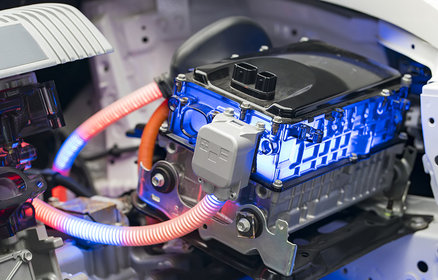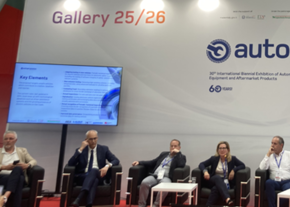
The European Commission's strategy for sustainable mobility - what role will car repair play
Massimo Brunamonti
It was back in 2002 when, to the surprise of many, the European Union adopted Regulation 1400/2002 (known as the "Ber - Block Exemption Regulation"). "In order to meet our climate targets, emissions from the transport sector must have a downward trend," said Vice-President Frans Timmermans in presenting the European Commission's multi-year strategic plan for mobility capable of contributing to the European "Green Deal" which aims to reduce emissions by 90% by 2050. Adina Valean, Commissioner for Transport, added that, "as a backbone connecting European citizens and businesses, transport is important for all of us. We have no time to waste in making it fit for the future." The Commission's goal is to define a path for "green" investments to create an irreversible path to zero-emission mobility.
The strategic plan, defined by its authors as a "fundamental transformation of transport" articulated on intermediate goals, is based on sustainability, intelligence and resilience, identifying some essential key points. First and foremost, sustainable means of transport and infrastructures obtained through either new technologies and power units or modulation of operating costs. Furthermore, "digital" innovations, such as connected cars and artificial intelligence are bound to play a vital role in intelligent and intermodal mobility. Finally, creating a stronger unified market, along with cheaper and safer transport standards, will generate a more resilient ecosystem. One might think that the moment couldn't be worse. The spread of the coronavirus is focusing everyone’s attention towards the all-important health issues we are all facing, rather than to the future of our society. However, as it often happens, in moments of great distress, opportunities for great initiatives arise; if, on the one hand, declarations may seem a bit bombastic and ambitious, we must bear in mind that the issues at stake are real game changers and the European Union seems to have embraced a project aimed at harmonizing a broad spectrum of activities previously dealt with individually. An example for all: Euro 7 (see Autoattrezzati, Pneurama n.5/2020), born as a logical continuation of the path started in the 90s, can become one of the pillars for sustainable mobility.
A similar argument could be made for vehicle MOT tests, which could contribute to a new sustainable mobility. In fact, the EU working document mentions improved road safety as one of its cornerstones; in fact, let us not forget that for some time now the EU has also set itself the ambitious "Vision Zero" plan, which aims at zero mortality on roads by 2050. The two initiatives would thus become linked in achieving the two goals. However, we are witnessing an incomprehensible, though not entirely unforeseeable, stalemate on MOT tests. Directive 2014/45, the mother of all standards in this field, is designed to achieve the primary objectives of harmonisation and mutual recognition of inspections in the EU, to be fully implemented by 1 January 2023. It is quite recent but still based on outdated techniques; anyone in the industry is well aware that brakes or headlights are no longer the only elements that guarantee safety; an assisted or autonomous car needs a properly functioning and reliable "automated systems”. However, this reliability should be periodically verified by testing the on-board electronic systems, and in this case, the technology is already known and applicable. We would expect the Commission to push for the adoption of these new tests, to be added as ADAS become mandatory. As things stand, we are inadequate and if we hesitate any longer, in 2023, when the Directive is fully implemented, MOT tests centres will be unprepared to deal with new vehicle technologies.
The entire auto repair supply chain, which is vital for the functionality of the "backbone" of which Commissioner Valean speaks deserve a final consideration. It is easy to foresee the need for a powerful technological upgrade, but the sector has already demonstrated its propensity for this in the past. What is new and perhaps more challenging to deal with, is the change in demand. It's hard to imagine that customers in the future will continue to turn to their trusted service simply to change brake pads or engine oil; more likely the customer, whoever he/she is, will look for assurance that their vehicle will not stop. Downtime costs are becoming increasingly significant for all categories of users and this will greatly affect the industry. Similarly to what already happens in aviation, we are moving towards what is called, preventive maintenance, which, besides improving consumer satisfaction, constitutes, together with overhauls and inspection tests the best policy on behalf of safety and sustainability








